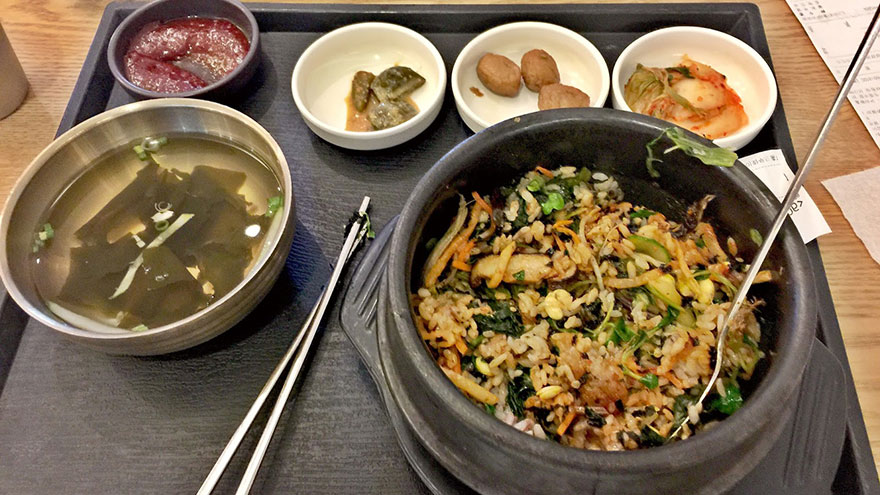How to Cook Korean Dishes in a Stone Pot
Dinner at a Korean restaurant often centers around meals prepared in a “dolsot,” a stone cooking vessel and serving dish that’s typically brought to the table sizzling hot.
Your food continues to cook right at the table, filling the atmosphere with the robust and pungent aromas characteristic of Korean cookery. If you’re an enthusiast for Asian food, preparing your own meals in a dolsot is surprisingly easy.

Tradition and Technique
Cooking with heated stones is one of the oldest known methods of preparing food, with a history going back tens of thousands of years. Shaping a stone to become the cooking vessel was a logical evolution, and a modern dolsot is an efficient cooking device.
Some are manufactured with a protective enamel coating, just as the French enamel their comparable cast-iron pots. Others are unfinished granite and must be seasoned before use. Bring salted water to a boil in your dolsot over gentle heat, then drain it and wipe the interior with vegetable oil.
Finish seasoning your pot in the oven, at 350 degrees Fahrenheit, for at least 30 minutes.
Making Dolsot Bibimbap
One of the best-known Korean dishes is bibimbap, a dish of rice heavily garnished with toppings. It’s extra-special when made in a stone pot, because the rice adhering to the stone creates a crisp, browned layer that provides a distinctive textural contrast. Start by cutting, marinating and pre-cooking your garnishes, such as spiced beef, julienned root vegetables or bean sprouts.
Warm your dolsot over low heat for several minutes, then oil it lightly and press already cooked rice into the bottom and partway up the sides. Increase the heat to medium, and once the rice is sizzling nicely, add your remaining rice and the other garnishes. The dish is finished when cooked-on rice crackles loudly. Garnish it with a soft egg and Korean chili sauce, and serve immediately.
Stone-Pot Bulgogi
The stone pot works equally well for preparing bulgogi, another fundamental Korean comfort food. Marinate thinly sliced beef and prepare your vegetable garnishes ahead of time, while the stone is preheating over low heat. Add the beef to your stone pot and stir it regularly as it cooks, then add already soaked Korean “cellophane” noodles and long-cooking garnishes such as julienned root vegetables or reconstituted shitake mushrooms.
After those have cooked and softened, add quicker cooking shredded greens or delicate mushrooms such as enoki. Garnish with chipped or shredded red chilies, and serve the dish steaming hot.
Tofu Stew
For many Americans, chicken soup is the default response to a miserable cold and stuffy sinuses. Its Korean counterpart is doenjang jjigae, a hearty soup built around a fermented soybean paste that resembles miso.
The rich broth contains this paste along with dried anchovies and kelp, all of them potent purveyors of savoriness or “umami.” The soup is garnished with julienned root vegetables and squash, and made filling with coarsely diced tofu.
Simmer it in your stone bowl until the tofu is soft and the flavors well blended, then bring it to the table still boiling in the stone’s retained heat.
Fine Points of Technique
Your dolsot’s heat retention is both its great strength and its weakness. It’s crucial not to change its temperature radically, either when heating or cooling. Pre-soak an unfinished dolsot in warm water before you start cooking.
Both plain and enameled versions benefit from slow preheating over moderate temperature. Increase the heat gradually as needed. In the same way, let your pot cool completely before you clean it.
Scrub out the inside with a brush or scour it with salt or baking soda, rather than immersing it in soapy water. Changing the stone’s temperature too rapidly will cause it to crack or shatter.
